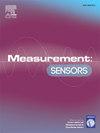液压冲击工具标定参数的研究
Q4 Engineering
引用次数: 0
摘要
研究了液压冲击工具的工作原理,并在此原理和使用条件的基础上,重点分析了供气压力、扣件转矩速率和延伸杆对工具输出转矩的影响。制定了实验设计,以确定这些参数对工具输出扭矩的影响。根据实验数据,建议将这些参数作为液压冲击工具的标定标准。本文章由计算机程序翻译,如有差异,请以英文原文为准。
Research on calibration parameters of hydraulic impulse tools
This paper investigates the working principle of hydraulic impulse tools and, based on this principle and usage conditions, focuses on analysing the effects of air supply pressure, fastener torque rate, and extension rod on the tool's output torque. An experimental design was formulated to confirm the influence of these parameters on the tool's output torque. Based on the experimental data, it is recommended that these parameters be used as calibration standards for hydraulic impulse tools.
求助全文
通过发布文献求助,成功后即可免费获取论文全文。
去求助
来源期刊

Measurement Sensors
Engineering-Industrial and Manufacturing Engineering
CiteScore
3.10
自引率
0.00%
发文量
184
审稿时长
56 days
 求助内容:
求助内容: 应助结果提醒方式:
应助结果提醒方式:


